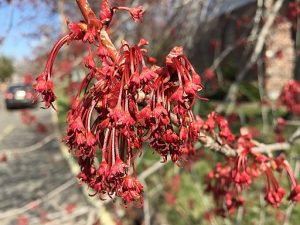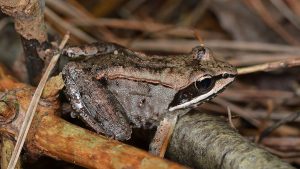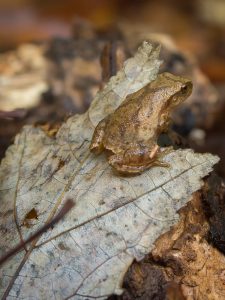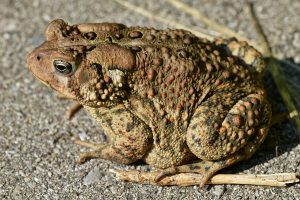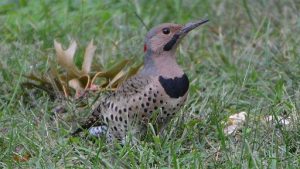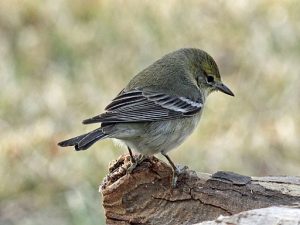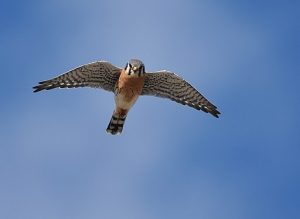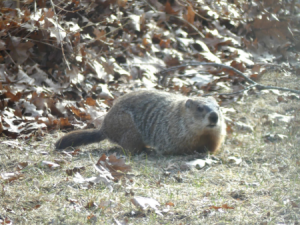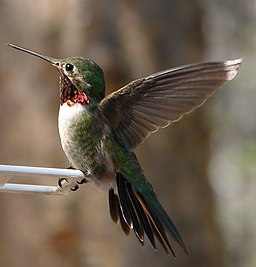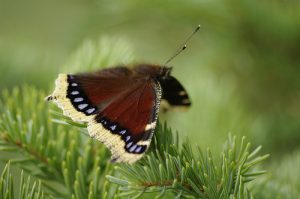Written by Gwyn Loud for the Lincoln Land Conservation Trust. She welcomes your sightings, pictures, and questions at 781-259-8690 or gwynloud555@gmail.com.
March did indeed support the folklore and “go out like a lamb”, with abnormally warm temperatures at the end of the month. April has started off with mix of mild days and cold nights, as well as plenty of wind. Let’s hope that April showers will bring May flowers. Lawns are giving hints of turning green, crocuses are blooming, and forsythia is about to flower. Red and silver maples are in bloom now, the flowers coming before the leaves, with female and male flowers usually on separate trees. This has been a good sugaring season. At Drumlin Farm for instance, they collected over 1400 gallons of sap.
The timing of rainfall over the past three weeks meant that once again there was not one “Big Night” when conditions were perfect for amphibians to migrate to their vernal pools. Presumably some frogs and salamanders moved during rain in the middle of the night or after showers, which left roads and the air damp. Sadly, many squashed salamanders were found on roads. Wood frogs, recognized by a dark mask through the eyes, have been giving their duck-like calls; the sound we hear is the males trying to attract females as they float on the water. Once the pair starts mating they may stay clasped together from an hour to two or three days, parting whenever the female has released her eggs (up to a thousand) in jelly-like clumps by a branch at the water’s surface. The male fertilizes the eggs as they are laid. Once eggs are laid the adult frogs leave the ponds to return to the woods until next spring. At this season we also hear the chorus of spring peepers from wetlands and by the middle of April we should listen for the high trill of American toads, a faint sound which seems to float on the air. On ANY wet night in the spring and summer amphibians may be out on the roads, so please drive carefully.
Avian spring migrants continue to arrive, either just passing through, like fox sparrows, or to establish nesting territories. No doubt you have seen flocks of American robins in fields, or blackbirds and grackles overhead. Eastern phoebes, American woodcocks, tree swallows, and killdeer are back, and an observer heard the trill of the first pine warbler. Other sightings of note include an American kestrel, turkey vultures, a red-breasted nuthatch, great blue herons, a common raven and a juvenile bald eagle. Wrens, though tiny, have loud songs. A winter wren was in full song near the stream by Valley Pond, and Carolina wrens have been singing in various locations. Several town residents have continued to report barred owls. Woodpeckers of all species are advertising for mates by drumming. One observer wrote, “My flicker just started drumming on the metal gutter over my office window. Every spring. Wow, is it loud, Amazing the guy doesn’t get brain trauma.” Luckily, as Wayne Petersen writes in a recent Boston Globe article, “Woodpeckers’ skulls are cushioned with special tissue that absorbs the shock of hammering on tree trunks, and helps prevent injury to the brain.”
Looking ahead, ruby-throated hummingbirds arrive around May 1, so get your sugar water feeders ready, and consider planting flowers such as bee balm and salvia which attract them. At Drumlin Farm the first bluebird egg was found in a nest box on March 31. While we welcome new arrivals, we also bid a quiet farewell to birds such as dark-eyed juncos and white-throated sparrows which have been at our feeders all winter and are now leaving to breed farther north.
Insects will not be very noticeable until warmer weather but watch for bees feeding on any early flowers, or mourning cloak butterflies. This butterfly, one of the earliest to appear, is mahogany brown, with yellow wing edges lined by blue spots. I recently found a woolly bear caterpillar, one of the few species of moths or butterflies which overwinter as larvae. The woolly bear spends the cold months curled up in sheltered places and in the spring starts to eat, and spins an oval cocoon using most of its hairs. After pupating for about two weeks it will hatch as an adult tiger moth. A favorite butterfly, the monarch, is one which we will not see for many weeks, but readers might want to monitor its northward migration from Mexico by going to the website www.journeynorth.org. The good news is that the number of over-wintering monarchs was the highest since 2006. The monarchs began leaving Mexico in March, heading north, laying eggs, and the adults will die by the end of April. The butterflies we see in the summer are the second or third generation.
In the world of mammals we welcome the woodchuck back from its winter hibernation (unless it is living near your vegetable garden). Chipmunks while not true hibernators, are now active too. A very large fisher was seen near Weston Road, as well as a black coyote in the same neighborhood.
Enjoy spring as it unfolds!
© Gwyn Loud,


